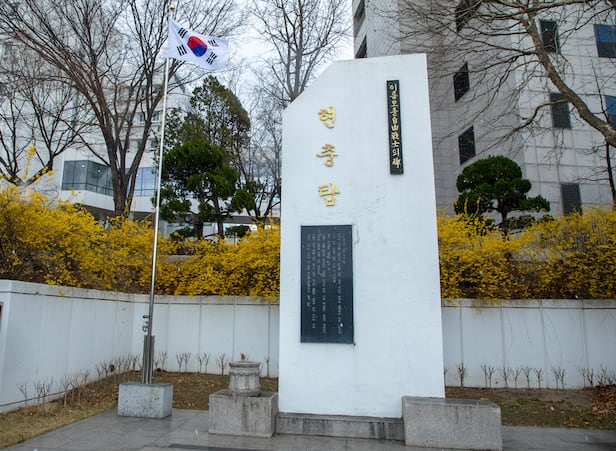
The Truth and Reconciliation Commission of South Korea, an independent body tasked with investigating the Korean independence movement, overseas Koreans, wartime atrocities, human rights abuses under authoritarian rule, and killings by hostile forces, is expected to classify the mass shooting of more than 1,000 wounded South Korean soldiers and civilian patients by North Korean troops at Seoul National University Hospital during the Korean War as a “massacre.” If confirmed, it would mark the largest single massacre by a hostile force ever officially acknowledged by a government agency.
Sources said on Mar. 30 that the commission plans to adopt a resolution in early April, urging the South Korean government to seek a formal apology from North Korean authorities and to pursue measures for victim compensation. The incident, known as the Seoul National University Hospital massacre, took place over two days from June 28 to 29, 1950. Following a comprehensive review of numerous accounts, the commission has reportedly determined that roughly 50 North Korean soldiers from the 43rd Division and the 5th Regiment of the 4th Division indiscriminately killed more than 1,000 injured South Korean soldiers and civilians inside the hospital.
The investigation was initiated in response to a petition filed in June 2022 by Choi Rong, 82, the niece of the late Yu Wol-im, who witnessed the events while working at the hospital as a nurse’s aide. The commission launched its inquiry that September. Its findings draw heavily from an 80-page report compiled by the Korean War Crimes Division (KWC) of the United States Far East Command, which includes testimony from North Korean prisoners of war and eyewitnesses. These accounts were corroborated through on-site investigations and archival materials.
The killings began in the early hours of June 28, the fourth day of the war. Around 1 a.m., approximately 50 North Korean soldiers advancing into Seoul were ordered by their superiors to proceed to the hospital and execute the wounded South Korean soldiers and civilian patients—reportedly to clear space for their own severely injured troops. The investigation also revealed that South Korean collaborators were involved in the massacre. Upon their arrival at 9 a.m., the North Korean forces received dozens of rifles and submachine guns from nine members of the local headquarters of the Workers’ Party of Korea in Seoul’s Seongdong District. At noon, the troops began sweeping through the hospital’s first, second, and third floors, shooting patients without distinction.
The massacre continued the following day. At 6 a.m. on June 29, North Korean soldiers led approximately 180 wounded South Korean troops from their hospital wards to a hill behind the building and executed them en masse. According to the commission’s findings, some of the victims reportedly shouted, “If you’re going to shoot us, do it quickly.” One North Korean soldier is said to have replied, “Sure, we’ll do just that,” before opening fire. Four troops threw grenades while roughly 50 others fired four to five shots each. The bodies were abandoned in hospital morgues, on the hillside, in nearby garbage dumps, or buried along the banks of the Hangang River.
The commission has reportedly identified around 50 perpetrators, including Ri Im-chol, a colonel in the North Korean 43rd Division, and Ri Kang-guk, a company commander in the cultural department of the provisional People’s Committee. Ri Kang-guk, who led the massacre and was later captured by U.S. forces, said during interrogation that the victims were executed “because they were enemies of us communists.”
This is the first official recognition of the massacre since the Truth and Reconciliation Commission was established in 2005 to investigate civilian and military deaths during and after the Korean War. The confirmation comes 75 years after the incident.
Although the massacre had been documented by U.S. military investigators, it drew little public or governmental attention in South Korea. Before its disbandment in May 1954, the KWC collected prisoner testimonies, conducted field investigations, and released its findings to the public.
In 1963, a memorial stone titled “Tomb of the Unknown Freedom Fighters” was erected behind the main building of Seoul National University Hospital. However, the Ministry of Patriots and Veterans Affairs did not designate the site as an official memorial until 2012—more than 60 years after the massacre. A formal government investigation did not begin until 2022, more than seven decades later.
Observers note that the long-delayed recognition reflects a historical focus by political and academic institutions on atrocities committed by South Korean or U.S. forces, while largely overlooking crimes committed by North Korea. The first and second commissions, established under the administrations of Roh Moo-hyun and Moon Jae-in, primarily investigated incidents such as the National Guidance League massacre and the Yeosu–Suncheon rebellion, in which South Korean military and police forces were responsible for civilian deaths.
By contrast, the Seoul National University Hospital massacre remained largely unaddressed until the launch of the third commission under President Yoon Suk-yeol’s administration in 2022.


